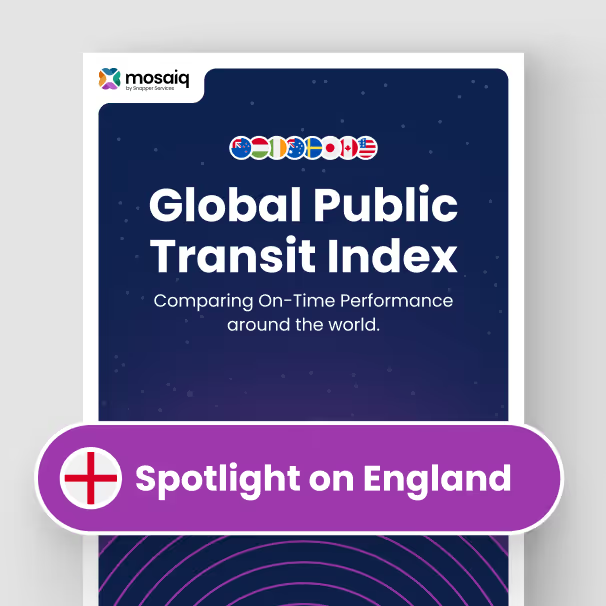
Global Public Transit Index
Comparing On-Time Performance around the world.
The Mosaiq Global Public Transit (PT) Index uses publicly available data to build referenceable insights and benchmarks for public transit authorities and operators around the world – including regional spotlights. It will continue to build on its On-Time Performance base to become a trusted reference to make public transport more efficient, more effective and more sustainable.

Our look at how England performs
The Mosaiq GPTI Spotlight on England uses publicly available, schedule and real-time data, that was ingested from the Bus Open Data Service (BODS). We identified six regions using a collection of stops for each local authority as found on the NaPTAN site.

Launch edition of the Global PT Index
In this first release of the Global PT Index we review data from eight locations around the world and map them to six different scenarios as to how they define early, on-time and late performance.
There are some significant differences between the best in On-Time Performance including those that leave too early or too late. It also gives insight into the wide variance of what is ‘on-time’ around the world - which will be of as much interest to those travelling on the buses, as those who run them.
Learn more about the data source






